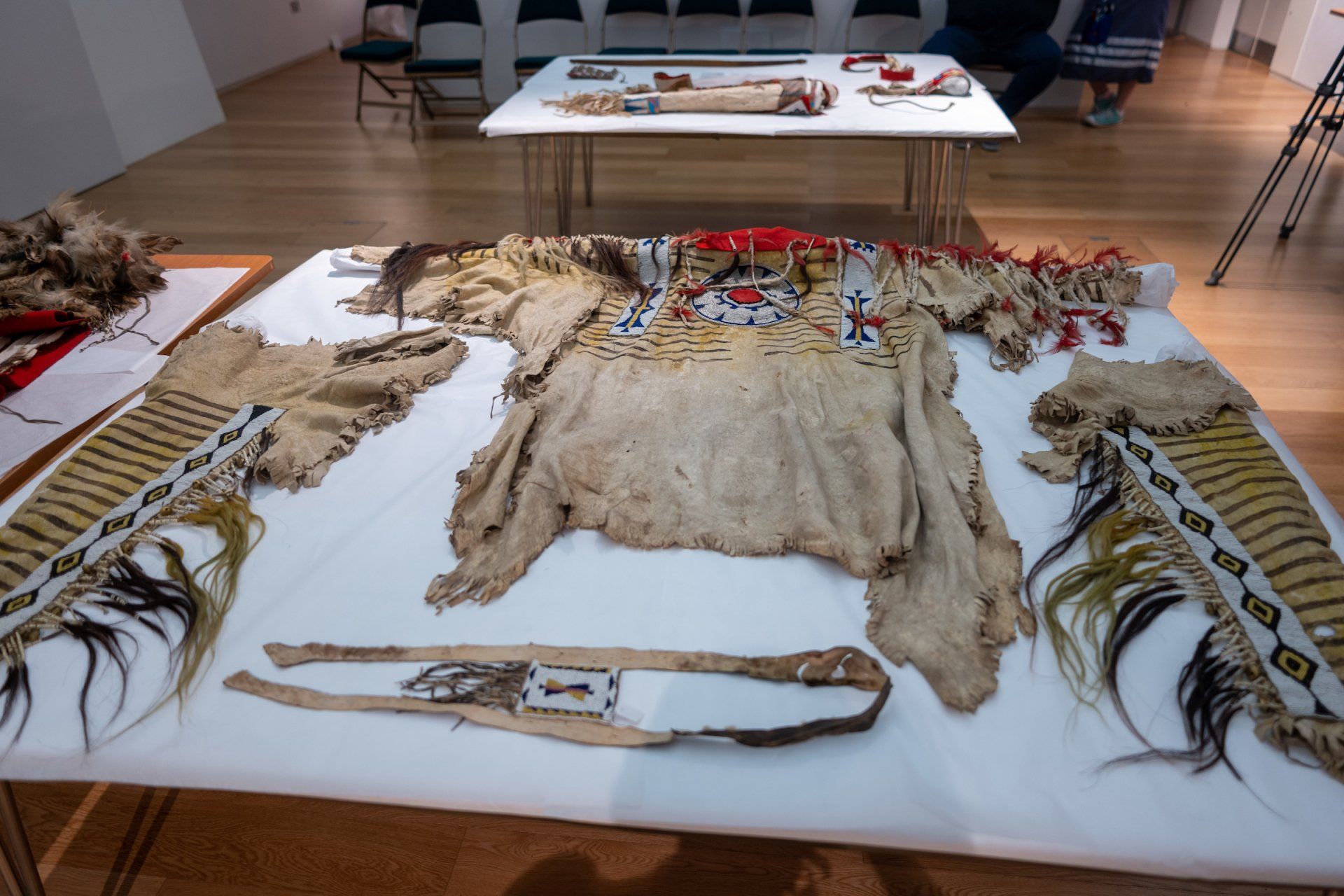Cultural Restitution
SHARE ARTICLE
At a handover ceremony in Exeter this week, the Royal Albert Memorial Museum & Art Gallery returned Chief Crowfoot’s sacred regalia to the Siksika Nation, a repatriation event agreed by the RAMM in April 2020 but delayed by Covid.
The regalia and other personal belongings of Chief Crowfoot, an important Blackfoot leader in the 19th century, includes a buckskin shirt, a pair of leggings, a knife with a feather bundle, two beaded bags and a horsewhip. All were acquired directly from Chief Crowfoot by Cecil Denny around the time of the signing of the Blackfoot Treaty, also known as Treaty 7, in September 1877 in Alberta, Canada. Crowfoot played a key role in the treaty signing, which he believed would help protect Blackfoot lands and their traditional ways of life.
But the terms of the Treaty were broken by Canada’s administration and, as a result, Blackfoot people and the Siksika Nation, today comprising a population of around 8,000, have suffered economically and socially.
The regalia was loaned to the RAMM in Exeter by Denny’s sister in 1878, then purchased by the Museum in 1904.
“Bringing these items back home to Siksika is a historic event,” said Chief Ouray Crowfoot, the current Chief at Siksika Nation, one of four Indigenous Nations that make up the Siksikaitsitapi (Blackfoot Confederacy).
“Many items left Siksika and other Nations and were scattered across the globe. Now the tides are turning and these items are finding their way back home. Crowfoot’s entire essence is in and around Blackfoot territory and this is where his belongings should be housed.”
Chief Ouray Crowfoot
It took five years of sensitive negotiation before Exeter City Councillors voted unanimously to return the Crowfoot regalia in April 2020. However, repatriation was delayed due to Covid travel restrictions.

Chief Crowfoot's Regalia
Following this handover event, the regalia will be packed and returned to Canada, where the Siksika Tribal Council will take future responsibility for their long term care and ownership. The Tribal Council has agreed to lend Chief Blackfoot’s belongings to the Blackfoot Crossing Historical Park, a museum that focusses on Siksika cultural heritage and the preservation of their way of life. The Historical Park is built on the site of the signing of the Blackfoot Treaty and is also the place where Crowfoot died.
This historic action, which Exeter City Council hopes will mark the start of an ongoing relationship between Exeter and the Siksika people, could set a precedent for the return of other Siksika items to their homeland.
“There are many more Blackfoot items still in need of being claimed and repatriated,” said Chief Ouray Crowfoot. “To me, it is not as important how these items left Siksika, but what is important is how we bring them back home.”
Photo: Siksika Nation representatives at the RAMM, Exeter
Courtesy of Royal Albert Memorial Museum, Exeter
More News



